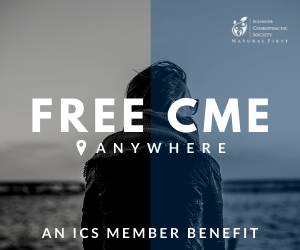
Torticollis Patients

Calling All Aspiring Researchers – HELP!
In recent years, our profession has shined under the scientific spotlight. The evidence has proven what we have been proclaiming for years- chiropractors excel at treating low back pain…and neck pain… and headaches…and the list goes on. But somehow, we’ve forgotten to score one of our “home runs”.
Most chiropractors enjoy treating torticollis patients. We know that in a matter of hours to days that contorted patient, who is writhing painfully in your waiting room, will be telling everyone about the dramatic relief they experienced in your office. Unfortunately, unlike your excited patient, chiropractors have apparently told no one in the scientific community about these outcomes. A literature search for “acute torticollis” produces…well…almost nothing! Let’s change that- but first, some background information may be relevant.
Torticollis
The term torticollis is derived from the Latin words tortus (twisted) and collum (neck). Torticollis, sometimes called “wry neck” is caused by involuntary, unilateral contraction of the neck muscles, particularly the SCM and trapezius. This protective splinting results in lateral flexion and contralateral rotation.
There are four basic forms of torticollis.
- Congenital torticollis is usually caused by tight fibrotic adhesions or a lesion in the SCM. The condition is recognized at birth or shortly thereafter. This may be related to muscular trauma during delivery. Congenital torticollis may also result from vertebral deformities like Klippel-feil or hemivertebra. An evidence-based protocol for congenital muscular torticollis is available from Cincinnati Children’s Hospital (1).
- Acquired torticollis arises post-trauma or in response to an adjacent inflammatory process. Osteomyelitis, lymphadenitis, pharyngitis, tonsillitis, cervical abscess, tumor, and RA can trigger acquired torticollis. Acquired torticollis may also be from partial dislocation (medical term: rotary subluxation) of C1 on C2.
- Spasmodic torticollis, also called Cervical Dystonia, is of unknown etiology and is characterized by a painful progressive involuntary contraction of the SCM. This spasm may be sustained or recurrent. Cervical dystonia is a neurologic movement disorder that may have a genetic link and is thought to be a “faulty guarding mechanism”.
- Acute torticollis is a common benign condition, affecting younger and middle-aged patients. Onset is typically sudden, often presenting upon arising. Symptoms are generally self-resolving in days to weeks. The remainder of this article will focus on acute torticollis.
Acute Torticollis
Unlike other forms of torticollis, there is scant scientific data concerning acute torticollis. The theories of origin are hypothetical and management recommendations are anecdotal. Chiropractors theorize that the condition results from a cervical spine facet joint restriction generating a cycle of pain, inflammation and more restriction. Trigger point activation in the SCM or trapezius is an alternate theory. The condition is thought to be precipitated by a minor traumatic insult like sleeping in an awkward position or sleeping under a draft from an open window or fan. Patients will sometime report a history of unusual or strenuous activity the day before, i.e. new exercises, travel, prolonged head rotation during a movie, etc.
Symptoms
Torticollis is defined by a characteristically painful, fixed posture of lateral flexion and possible contralateral rotation. The spasm may be primary, or a secondary hypertonic response to decompress a contralateral inflamed facet. Some degree of forward flexion often accompanies the deformity and a lateral shift may be evident. Movement is painful to unbearable. Sleep is sometimes disturbed. Symptoms in the shoulder and upper back may accompany local pain and spasm. No outcome assessment tool exists specifically for acute torticollis but practitioners could arguably document progress with the Toronto Western Spasmodic Torticollis Rating Scale.
In addition to antalgia, clinical evaluation reveals an impressive loss of range of motion. Extension and lateral flexion into the side of pain is significantly limited. Lateral foraminal compression and Spurlings tests may be positive for local pain. Palpation may reveal unilateral hypertonicity or spasm of the SCM, trapezius, and levator. Localized tenderness is common. Motion palpation generally reveals intersegmental joint restriction.
Diagnosis
Radiographs may be unnecessary but are indicated with a history of trauma or in the presence of “red flags”. Clinicians may encounter some difficulty positioning patients and interpreting radiographs due to the antalgic cervical posture.
The finding of “torticollis” is descriptive but not diagnostic (i.e. headache). It is a clinical sign of another condition- some benign, others quite threatening. Nearly 80 entities have been associated with the diagnosis of torticollis. Infections may cause lymph gland inflammation and reactive muscular spasm (osteomyelitis, meningitis, pharyngitis, sinusitis, etc). Additional threatening triggers include fracture, neoplasm, atlantoaxial instability (common in Down’s syndrome). Certain drugs are thought to precipitate torticollis (dopamine blockers, ketamine, amphetamines, cocaine, Compazine, Haldol, and Thorazine) (2). “Red flag” symptoms for torticollis include fever, swollen lymph nodes, significant headache, difficulty breathing, swallowing or speaking, ataxia, weakness, numbness or paresthesia in the extremities, and change in bowel or bladder function.
Treatment
Treatment should not be initiated until more serious causes of torticollis have been ruled out. The reduction of paraspinal spasm will likely need to precede any attempt at manipulation. Modalities including ice, heat, continuous ultrasound, estim and/ or cervical traction may be useful. A myofascial release should be directed at hypertonicity in the SCM, trapezius, levator and any other associated paraspinal muscles. Traditional stretching may prove difficult initially as this movement will not likely be appreciated. Anecdotal evidence suggests that spinal manipulation, when not contraindicated, should be implemented as soon as tolerable. Light force or instrument adjusting may be needed when the patient is unable to tolerate any pre-position for manual manipulation. As the condition improves, in-office and home stretching may be added for the SCM, trapezius, levator and any other involved muscles. Patients should avoid sleeping on their stomach or in drafty conditions. They may consider the use of a cervical support pillow. ADL advice should be given for workstations. NSAIDS and counterirritant creams may provide palliative benefit.
Unfortunately, much of this paper is based on personal experience and lacks hard data. We must change this! In collaboration with the ICS staff, I have prepared a data collection tool so that we can begin the process of adding “acute torticollis” to our growing list of scientific successes. Each time you complete the release of a new torticollis patient, please take 5 minutes to access and complete the electronic questionnaire at http://www.surveymonkey.com/s/torticollisdata. Your input is vital in proving what we already know- Chiropractic Works!
References
- Cincinnati Children’s Hospital. Therapy Management of Congenital Muscular Torticollis. Evidence-Based Care Guideline for Management of Congenital Muscular Torticollis in children age 0 to 36 months. Health Policy & Clinical Effectiveness Program, Guideline 33.
- www.emedicinehealth.com/torticollis/page2_em.htm, April 2013















